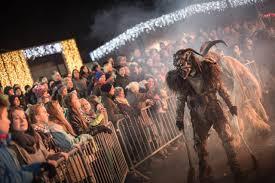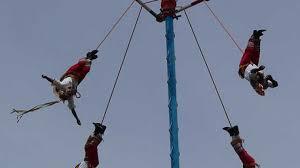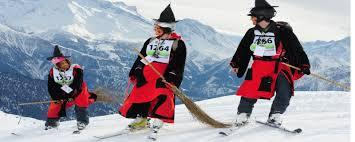Results: Celebrate Winter In The Strangest Ways
Published on 12/03/2018
QUESTIONS
GO to COMMENTS
Comments
1.
1.
Winter can be a hard season, and each person and each community deals with it in a way that best helps them cope with the season's trials, or celebrate the best it has to offer. For some, that means outdoor sports, indoor activities, an extra log on the fire place. And in some parts of the world, this time of year is just another excuse to do something totally out of the box. Iceland, for example, likes to party the winter away with some very strange festivals. Have you heard of any of these Icelandic festivals?

Þorri is one of the months in the old Norse Calendar, roughly equivalent to modern day February. It's celebrated with "Þorrablót" where people gather and eat all the weird traditional foods of Iceland, like fermented shark, lamb heads, and pickled rams' testicles.
5%
109 votes
Cream Puff Day, or Bolludagurinn in Icelandic, happens on the Monday six weeks before Easter. On cream puff day, you get to wake up and spank you parents with a stick, and the more spanks you give them, the more cream puffs you get. (No, really).
7%
150 votes
On Bursting-day you eat salted lamb and soup until your belly aches. It is celebrated on Shrove Tuesday when heavily salted lamb is consumed with a side serving of pea soup. Traditionally, Icelanders were encouraged to eat to bursting point, during what would be their last proper meal before Lent.
4%
78 votes
None of them
89%
1951 votes
2.
2.
In Central European folklore, Krampus is a horned, anthropomorphic figure described as "half-goat, half-demon", who, during the Christmas season, punishes children who have misbehaved. A more modern take on the tradition in Austria, Germany, Hungary, Slovenia, and the Czech Republic involves drunken men dressed as devils, who take over the streets for a Krampuslauf—when people are chased through the streets by the "devils." Krampus spends the holiday season seeking out the boys who've been naughty this year and making them pay for their orneriness. And forget the "lump of coal" punishment. Krampus straight-up loads the young wrongdoers into a bag, and either tosses them into a nearby river, or hauls them off to his lair, where they are presumably eaten. And, in certain Swiss villages, young men actually dress up in the horns and beards and chase down children and rival young men, whacking them with brooms. Do you think this sounds like something you'd like to see (if even just once)?

Yes
16%
353 votes
No
57%
1249 votes
Undecided
28%
621 votes
3.
3.
Japan's Hadaka Matsuri translates as "the naked man festival." Despite its name, most participants go in at least a loincloth, which is good for all – the event happens in February, and onlookers routinely toss water on them throughout the proceedings Around 9,000 people converge on the city of Okayama, strip down to their skivvies, and wait until a priest tosses two wooden sticks about the size of rolling pins down into the throng, and it is total chaos until someone manages to get one of these sticks into a special box. According to tradition, whoever manages this statistically unlikely feat will have what can only be called the most richly-deserved good luck all year long. Does this sound like something you would like to see or participate in?

See only
14%
302 votes
Participate in
5%
109 votes
Neither
83%
1812 votes
4.
4.
As far as marking the winter solstice, Mexico and Guatemala's Danza dos Voladores is not for the faint of heart. Basically, five men free climb a 30 m pole, and attach ropes around their ankles. Then four of them launch themselves into the air, descending to the ground on the end of the ropes as they unravel – while the last man dances slowly perched at the very top, playing the flute or drums: It is traditionally held on December 21, a significant date in the Maya Long Count Calendar. Have you ever seen this done?

Yes
8%
169 votes
No
94%
2054 votes
5.
5.
In the 1800s, the residents of a small Swiss town accused a woman of murdering her husband using ridiculous evidence, and had her burned at the stake as a witch. Today, this barbaric act is commemorated by the people in the Alpine town of Belalp in a very odd way -- they spend a few days in January skiing downhill dressed up like cartoon witches, complete with pointy hats and fake warty noses. The premise may be silly, but the challenge isn't. Around 1,500 people brave the slopes on a grueling 12 km tear down the hillside, afterwards celebrating with live music and festivities. Do you think this is a strange way to remember what happened in the 1800s?

Very strange
48%
1050 votes
No, sounds about right
19%
414 votes
Not sure
35%
759 votes
COMMENTS


